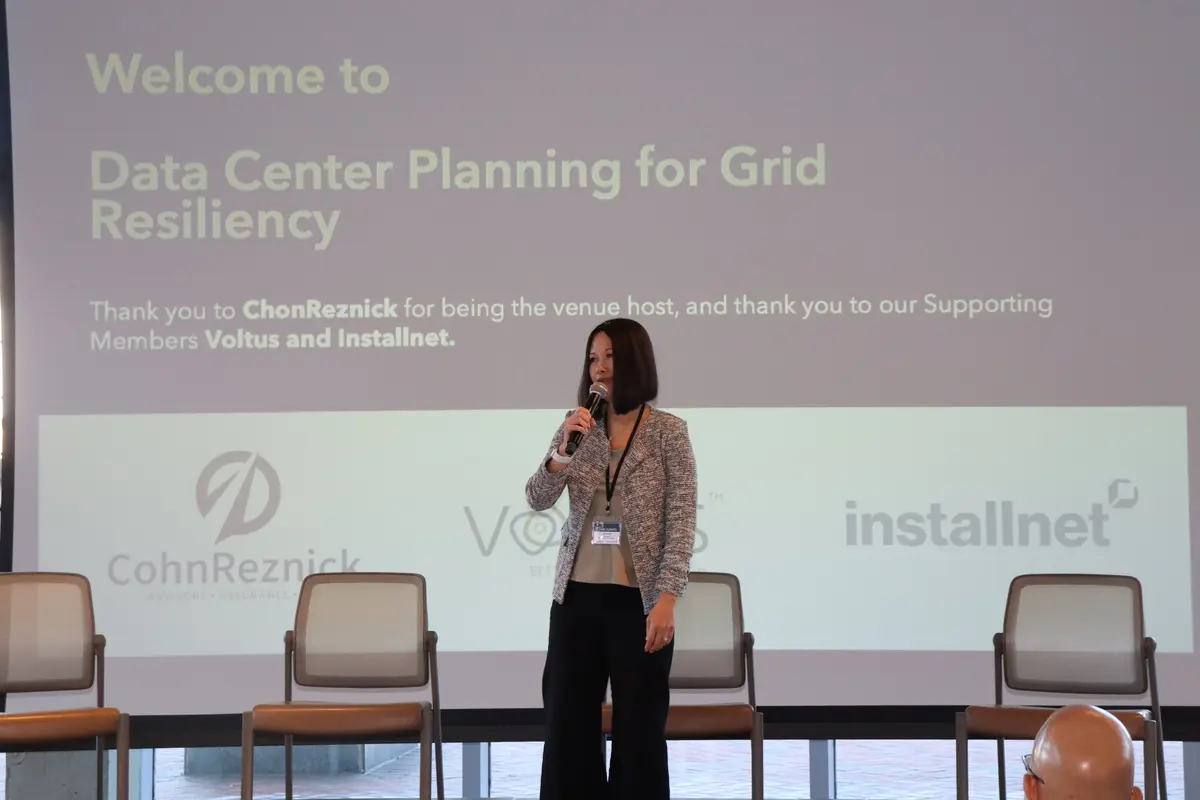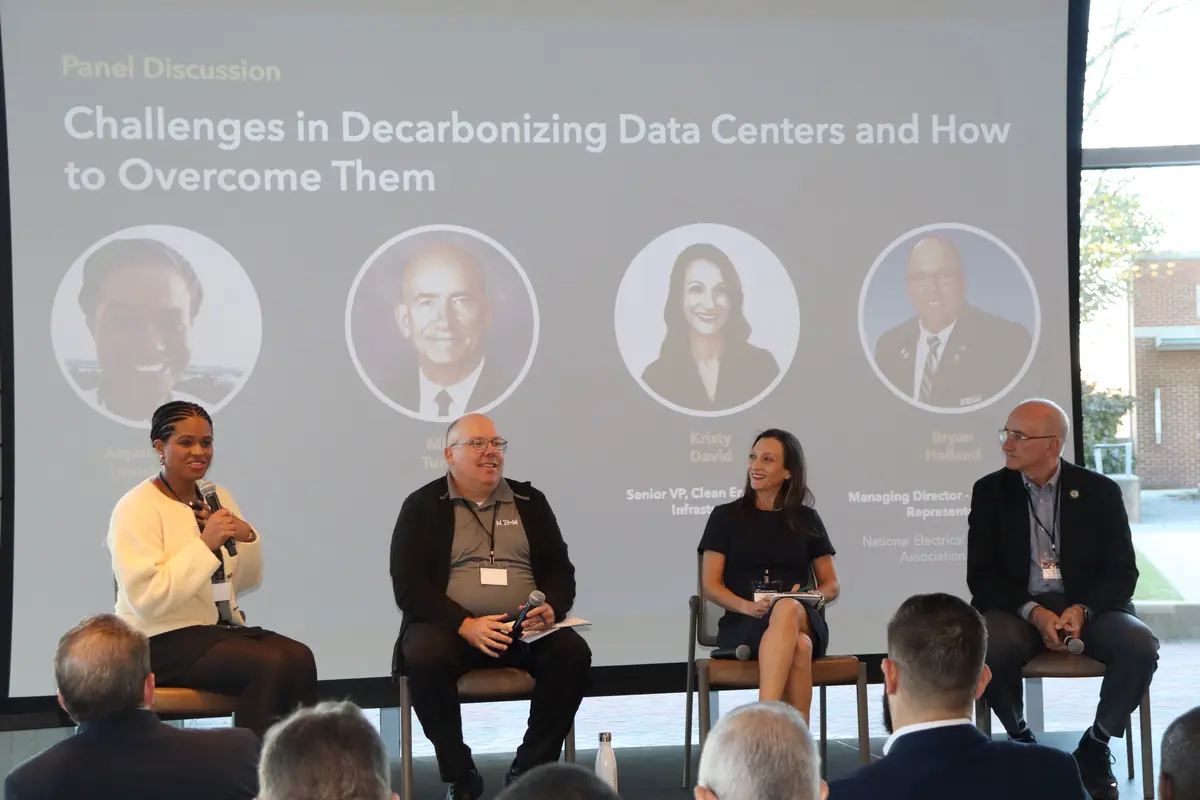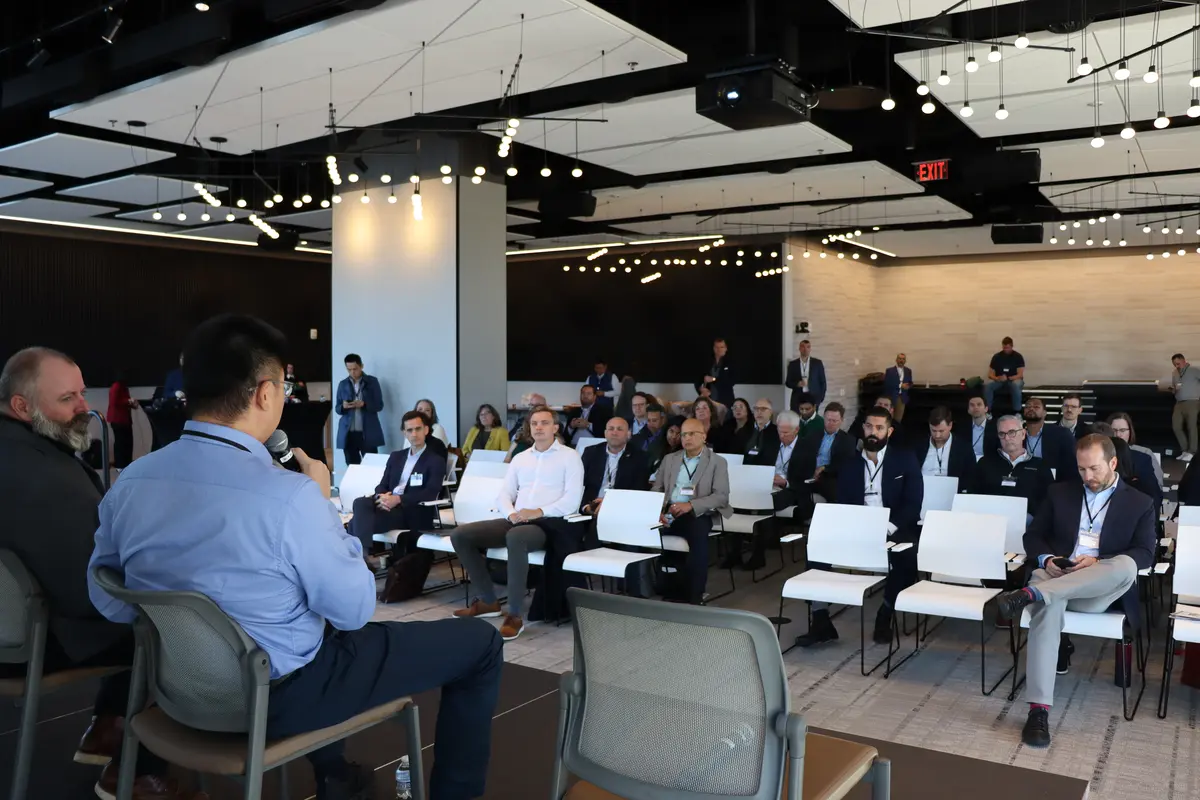In one rapidly growing region, a utility planner recently joked that their interconnection queue now reads like a wish list for a grid that doesn’t exist. It’s funny because it’s true, and because everyone around the table knows they have to build real projects on top of that reality.
In the span of a few planning cycles, regions that once worried about flat load now face requests equivalent to adding entire mid-sized cities to their systems. Data centers, AI clusters, electrified fleets, and new manufacturing plants keep showing up in utility interconnection queues years before the grid is ready to serve them.
In closed-door conversations between utilities, developers, and local governments, a pattern has become hard to ignore: the grid is no longer a stable backdrop you can take for granted. It has become one of the defining constraints on where, how, and whether the next generation of energy-hungry infrastructure gets built.

1. The Acceleration Problem
A decade ago, most planners could safely assume that load growth would be modest, predictable, and tied to familiar drivers like population and economic activity. Long-term forecasts were not perfect, but they were “good enough” for decade-long transmission plans and plant retirement schedules.
That logic breaks down when a single new data center campus can require hundreds of megawatts on its own.
In one fast-growing region, utility planners describe seeing back-to-back requests for large digital infrastructure, each with an in-service date only a few years away. Add in a state-level push to electrify buses and delivery fleets, plus an incentive package to land a new manufacturing facility, and the system suddenly faces a step-change in demand rather than a gentle slope.
The infrastructure responding to this pressure moves on a different clock. New transmission corridors and major substation upgrades routinely take five to eight years from concept to commissioning. Even relatively modest reinforcements can be slowed by permitting, supply chains, and workforce constraints. The result is a structural timing mismatch: large loads can be permitted and built in one to three years; the grid capacity they need may not materialize until the next decade.
That mismatch shows up first in the places where the system is most exposed. Interconnection queues stretch further into the future. Capacity markets in some large multi-state regions clear at significantly higher prices from one auction to the next. Long-term reliability assessments quietly move balancing areas into higher-risk categories, especially under extreme weather scenarios.
For developers and large energy users, these are not abstract trends. They show up in discounted cash flow models, site-selection memos, and board-level conversations. Projects that looked straightforward on paper become contingent on assets outside the developer’s control. The basic assumption that “if we build it, the power will come” no longer holds.

2. Reliability, Risk, and the New Economics of Scarcity
When demand outruns infrastructure, risk migrates. It moves from the margins of planning documents into day-to-day business decisions.
Part of that shift is about the generation mix. Retiring coal and older gas units reduces emissions and local pollution, but it also removes the dispatchable capacity that grid operators used for decades as a reliability backstop. Today, wind and solar are often the cheapest new resources and are central to decarbonization plans. They also bring new patterns of variability and seasonality that must be balanced by storage, flexible demand, and robust transmission.
Where those balancing tools lag, reliability ceases to be a solved problem. Higher capacity prices are one visible symptom: markets are signaling that firm, dependable resources are scarce at the margin. Changes in capacity market rules are another, as operators and regulators adjust scarcity pricing, qualification standards, and performance expectations in an effort to ensure enough resources show up when they are needed most.
For a hyperscale data campus or industrial cluster, this “new economics of scarcity” is not just about lights staying on. Reliability risk now shapes:
- Siting decisions: Is it worth building near a constrained substation if the interconnection upgrade is uncertain or a decade away?
- Redundancy architectures: How much on-site capacity is needed to ride through strained grid conditions, not just momentary outages?
- Procurement strategy: Do long-term contracts lock in supply adequately, or do they embed new types of regulatory and market exposure?
A second layer of complexity comes from climate and disclosure standards that are still in motion. Rules for carbon accounting, renewable procurement, and climate-related financial reporting are being refined through successive rounds of guidance and consultation. Teams planning large assets today are effectively making bets on how these rules will land: whether a particular procurement strategy will count as “clean” in five years, or whether a portfolio that looks compliant now will later be seen as under-ambitious.
The practical consequence is that project teams are optimizing across three moving targets at once: cost, reliability, and future compliance. Ten years ago, power price risk was largely addressed with hedging and long-term contracts. Today, the shape of the risk has changed. It is intertwined with system adequacy, market design, and evolving expectations about what “credible decarbonization” looks like.

3. When Backup Becomes Baseline
One of the clearest responses to this environment is happening behind the meter.
Traditionally, on-site power meant diesel generators sized to carry a facility through relatively short outages. They were an insurance policy, not a strategic asset. That view is changing. For many large loads, on-site systems are becoming a core part of the infrastructure plan rather than a contingency.
Consider a data campus in a region where interconnection upgrades are uncertain and capacity prices are rising. Instead of depending entirely on the grid, the project team might design a hybrid on-site system combining:
- Modular combined heat and power units that supply firm electrical capacity and usable heat
- Battery storage to provide fast-response resilience and participate in demand response
- Solar over parking and rooftops to shave daytime demand
- Thermal storage to shift cooling loads out of peak hours
In that configuration, the grid is still vital, but it is no longer the only source of security.
Thermal systems are especially important in these designs. Facilities with large cooling loads can use chilled-water or phase-change storage to move cooling work into off-peak hours, dramatically reducing peak electrical demand. State-level programs that direct funding toward large-scale thermal projects for buildings are effectively telling the market: these are not exotic experiments; they are part of the mainstream decarbonization toolkit.
At the federal level, long-duration storage has moved from white papers into strategy documents and demonstration portfolios. National roadmaps for storage that can run for ten or more hours, often including thermal approaches, signal that planning should assume a broader menu of storage technologies over the next decade. Federal demonstration programs negotiating substantial support for industrial thermal storage send a similar message: behind-the-meter thermal assets are expected to play a bigger role, not just on the grid side but at the plant or campus scale.
Digital controls tie these elements together. Advanced platforms now orchestrate generation, storage, and flexible loads within a site: ramping non-critical equipment up or down in response to price signals, scheduling cooling to avoid coinciding with local peaks, or exporting services to the grid when conditions and contracts allow. When this is done well, the facility behaves less like a passive consumer and more like a small, dispatchable portfolio.
For decision-makers, the question is no longer “Should we consider on-site energy?” It is “What mix of on-site options best hedges our exposure to grid risk, supports our decarbonization goals, and keeps the balance sheet manageable?”

4. Planning, Zoning, and Communities as Gatekeepers
Even the most sophisticated project plans with on-site systems will fail if they cannot secure a site and local approval.
Across regions seeing rapid data center and industrial growth, local planning and zoning have become decisive gatekeepers. Counties that once handled large projects on a case-by-case basis are moving toward formal frameworks: minimum buffer distances from homes and schools, daytime and nighttime noise limits, emissions performance expectations for backup generators, visual screening requirements, and conditions on how projects must connect into existing roads and infrastructure.
From the developer’s side of the table, these frameworks can feel like a wall of new constraints. But they also reduce ambiguity. A county that has codified what “acceptable” looks like for energy-intensive uses is sending a clear message: if you meet these conditions, you have a path; if you do not, expect friction.
Early-stage engineering choices matter enormously in this environment. Many of the hardest conflicts trace back to assumptions made in the first few months:
- Cooling and power densities that leave no room for mitigation
- Interconnection timelines plugged into models without utility input
- Acoustic and visual impacts treated as secondary details rather than primary design parameters
When these realities surface only at the permitting or community-meeting stage, the project team is suddenly renegotiating fundamentals under public pressure.
Communities, for their part, are shifting from reactive opposition to proactive design. Some are writing their own best-practice templates for data centers and other large loads. Others are integrating energy-impact analysis into land-use plans so that preferred development zones align with areas of relative grid strength. In places where this has happened, early tensions are still present, but the conversation moves more quickly from “whether” to “how.”
For practitioners, the message is simple and direct: in energy-constrained regions, planning, zoning, and community engagement are not check-the-box steps after the deal is signed. These checkpoints in design stages are strategic workstreams that determine whether the project is buildable at all.

5. The Human Constraint: Workforce as Infrastructure
Beneath all of these system-level questions lies a constraint that is easier to overlook on a spreadsheet than in the field: people.
Data centers, long-duration storage assets, microgrids, and transmission upgrades do not build themselves. They depend on a deep bench of skilled workers, including electricians, high-voltage technicians, welders, fabricators, controls engineers, commissioning teams, and the supervisors who have done this before. Recent national workforce roadmaps have been consistent on one point: current pipelines into the trades and specialized technical roles are not sufficient for the build-out that climate goals and digital expansion imply.
In practice, developers see this as:
- Bids that come back with long lead times because contractors are already fully booked
- Difficulty finding firms with experience in both traditional electrical work and newer technologies like advanced storage
- Maintenance programs stretched thin because the same specialists are responsible for more critical systems across more sites
There is also a perception problem. For years, cultural narratives pushed talented students toward four-year degrees and desk-based careers, framing trades as a fallback. That picture no longer matches reality. Many of the roles most critical to decarbonization and digital infrastructure are high-skill, well-compensated, and tied directly to tangible outcomes.
Some organizations are acting on this insight. Partnerships with high schools, vocational programs, and community colleges are being built around specific regional project pipelines. Apprenticeships are being expanded to include training on advanced energy technologies rather than only legacy equipment. In a few places, major projects are now expected to contribute directly to local training pathways as part of their community-benefit commitments.
For project teams, a practical takeaway is to treat workforce as a hard constraint from day one, not an implementation detail to be solved later. That means stress-testing schedules against realistic labor availability, building long-term relationships with key contractors, and recognizing that in some markets, the scarcest resource is not capital or land or policy support—it is the people able to execute the work.

Closing Thoughts
Taken together, pressures like demand acceleration, reliability risk, planning complexity, and workforce shortages are shaping today’s energy-intensive projects and pushing teams into a new operating reality. Nothing about this moment is linear or predictable. Yet across regions and sectors, the organizations making real progress share a common approach:
- They acknowledge the constraints early.
- They design around uncertainty rather than waiting for it to resolve.
- They treat power, community alignment, and talent as strategic variables rather than downstream considerations.
That mindset shift is becoming one of the most important differentiators in the market. And it’s also why forums like Decarb Summits matter. In our exclusive discussions, developers, utilities, policymakers, manufacturers, investors, and major end-user operators sit together and share what is working—not in theory, but in active projects across the country. Those conversations surface the choices teams are making under pressure, the strategies that are earning approvals, and the models that are proving resilient as the grid tightens.
We also recognize that not everyone can fly to D.C. or New York to hear these valuable discussions firsthand. So, over a few months, we’ve been conducting deeper work behind the scenes: reaching out to project developers, investors, utilities, engineers, community planners, and data center operators across big tech and beyond. We’re collecting the most forward-looking insights: what they’re planning for 2026, how they’re adapting to new constraints, and which design and procurement strategies are actually helping them get projects across the line.
We are compiling these insights into a Data Center Playbook for 2026, which we’ll release early next year. If you work in this space and want to stay ahead of the curve, you can sign up for our newsletter to be the first to hear when it’s getting released.

